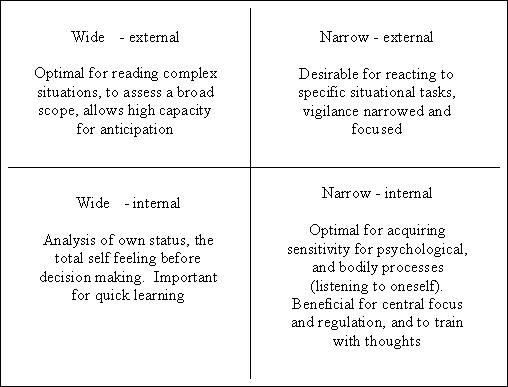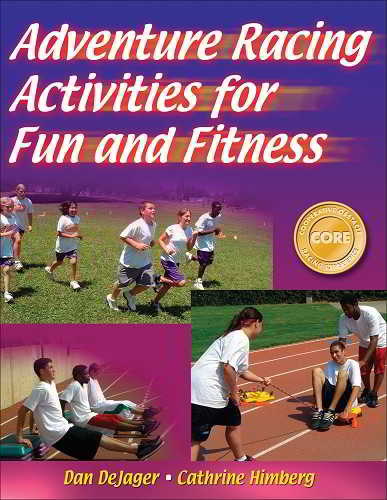Cognition and injury prevention through motor learning during the development of elite Orienteering performance
by Martin Krause, May 2002
Master of Manipulative Physiotherapy, Graduate Diploma Health Science (Exercise & Sport), Graduate Certificate Health Science Education
Content
How does the expert determine relevant information
Expert & Exceptional Performance
Learning (acquisition of skill)
Fundamental requirements for co-ordination
Differentiation for new skill acquisition
Motor variability (repetition without repetition)
Uncontrolled manifold hypothesis
Psychological Stress (boredom versus anxiety)
Strategic automatization and imagery
"The ultimate goal of a training programme is to attain optimization of mobilizing and stabilizing forces through the engagement of feed-forward CNS efficiency"

Orienteering is a sport, which requires an athlete to run through terrain with a map and compass. At an elite level the winning times are between 70 and 90 minutes. Central to orienteering is the requirement to manage attention from three sources of information: the map, the environment, and run through the terrain (Eccles, Walsh, Ingledew 2002). During the development of elite orienteering skills the management of these sources of information needs to be refined through experiential learning (Aeschlimann 1997). Additionally, the avoidance of injury may influence the development of expertise in orienteering. Moreover, the development of expertise suggests the specific development of all musculoskeletal structures (excluding bone length but including width) required for the agility, speed, co-ordination, endurance and power for orienteering.
How does an elite athlete perceive the most relevant information?

Expert & exceptional performance
Expertise is gained through experience of and practice in a domain (Ericsson, Krampe, Tesch-Romer 1993). Knowledge has been proposed as the mediator between practice and skill (Gilhooly 1990). Vast, well-organized and domain specific knowledge appears fundamental to expertise (Williams 2000). Experts are therefore knowledge driven whereas novices are search driven during problem solving (Gilhooly 1990). These adaptations make the expert efficient by reducing processing demands on the less adaptable, limited capacity, basic visual and neural systems (Ericsson & Lehmann 1996). Anticipation, allows experts to prepare their actions thereby circumventing the need for rapid immediate reactions (Ericsson & Lehmenn 1996). In orienteering the novice attends to the start first thereby working forward with their problem solving whereas the expert attends to the control site, thereby working backwards (Eccles, Walsh, Ingledew 2002). Importantly, the experienced orienteer is able to read the map without a loss of running performance (Eccles et al 2000). Therefore, the experienced orienteer will make use of the map for an automated analysis of the running conditions to decide which, is the fastest and safest route.

Learning (acquisition of skill)
The ability to learn defines the requirement to be able to acquire and stabilize new motor programmes. Without the ability to learn, to lay down new motor programmes and to recall motor programmes when required, it becomes impossible to gain the motor control necessary to compete in an adaptable manner to an ever changing environment (figure 1) (Aeschlimann 1997). This adaptability is critical as the orienteer is often confronted with varying terrain. Reaction time involves proprioception as well as feed-forward visual reflexes which become more developed with experience.
Figure 1 Correlation between the fundamental requirements for co-ordination
Differentiation refers to the ability to adjust each body part to maximize the efficiency of movement of the entire system. Initially, the learner may use a 'freezing-freeing' process, which reduces the number of active biomechanical degrees of freedom to be managed (Magill). The second strategy consists of introducing rigid couplings between the oscillators building the system. Therefore, learning implies the dissolution of initial couplings and the emergence of new, more task specific couplings. This was demonstrated by a new organization of the trunk during the acquisition of a complex balancing task (Caillou, Nourrit, Lauriot, Delingnieres 2002). Conceivably, such learning would impart the ability to co-ordinate various body parts quickly to varying demands of the terrain
Fitts and Posner proposed a three stage model. The cognitive stage is marked by large amounts of variable performance and error. The second stage is the associative stage where the learner is refining their skills, and they are now able to detect some of their own sources of error in performing the task. The final stage is the autonomous stage where the skill is automatic or habitual (Magill).
One of the most commonly seen features in orienteering is motor variability. Bernstein (1967) used an expression "repetition without repetition" whereby each repetition of an act involved unique, nonrepetitive neural and motor patterns. Synergies have been proposed to accommodate this motor learning problem of controlling for infinite degrees of freedom. Synergies are defined as a structural unit organized in a task specific manner, where if an element introduces an error into the common output, other elements change their contributions to minimize the original error, and no corrective action is required by the controller (Latash, Scholz, Schoener 2002). Releasing and reorganizing degrees of freedom are processes that accompany practice (Schmidt & Lee 1999). Recently an "uncontrolled manifold hypothesis" was proposed which assumes that when a controller of a multi-element system wants to stabilize a particular value of a performance variable, it selects a particular subspace where the desired variable is held constant. Simultaneously, other elements can show a high degree of variability so long as they do not affect the essential variable (figure 2) (Latash et al 2002). Similarly, closed loop theory suggests that a learner acquires a reference of correctness (Schmidt & Lee 1999). Variability is particularly important in orienteering as each course is unique and different. Without variability, injury and/or sub-optimal performance is likely to occur.

Figure 2: the uncontrolled manifold hypothesis for oscillatory movements
The ability to anticipate the changing environment and the ability to predict the outcome of a given motor strategy allows time for analysis and selection of alternative movement patterns (Eccles et al 2002). By anticipating the environment from the map, and by simplifying the information required to navigate, expert orienteers can circumvent processing limitations (Eccles et al 2002). From a dynamic control perspective, long sequences of movement are generated based upon prediction (Schmidt & Lee 1999). This would entail anticipation of upcoming terrain difficulty, since efficient use of energy is paramount for optimal performance (Aeschlimann 1997; Eccles 2002). Gentile (1972) proposed the need for diversification when learning such 'open skills'.
Variable Reality
Orienteering involves the use of maps. These maps have standardised symboles to represent terraine (eg contours, creeks, rocks, cliffs, etc). However, their depiction is an interpretation by the maper. Additionally, geographic variation may dicatate that rocks of a certain size are mapped as contours rather than rocks, re-entry half gullies and uneven terrain may be mapped irregularly, bare rock may be ingnored, emphasis may be placed on contours, rocks, or vegetation boundaries depending on the country you are in. Furthermore, the vegetation may vary depending on the season and hence affect runnability and/or navigability. Added to this variability of the depiction of reality, is the runners interpretation of the features and their significance to the lie of the land. My experience of analysis of elite Swiss Orienteers was that males tended to place emphasis on linear features and angles of attack, whereas females were more likely to emphasise vegetation features. Interestingly, elite orienteers were prepared to accept varaibility in interpretation and decision making by analyzing these cognitive attributes through the verbalistion of their thinking as well as requesting that verbalisation of others. Hereby, the philosophical constraints of language on reality were reduced, allowing for greater mental agility for confronting decision making tasks in new terraine which normally wouldn't have conformed to their sense of reality.
Learning facilitation therefore should come from family members, later from club training and peer interaction and from squad training (Aeschlimann 1997). This perspective is supported by the literature (McNevin, Wulf, Carlson 2000) whereby practice in larger groups allows participants to observe others performing the same task, thereby providing sensory cues of correct performance. Typically, orienteers compare their route choices after an event. Frequently, these comparisons include timed splits, reasons for making a particular route choice and strategies for overcoming errors. This is often on an informal basis. However, squad members have coaches and as well as a more experienced peer as mentor. As the expert has acquired complex encoding methods and retrieval structures that utilize the apparently limitless capacity of long term memory (Ericsson & Lehmann 1996), the novice may gain useful insights into the process of problem solving through this interaction.
Burnout
Burnout is defined as a breakdown in fitness (Botterrill & Wilson 2002). Recommendations for the prevention of burnout based on mental and emotional fitness include
- understanding psychic energy
- reassessing realistic and achievable goals, (Aeschlimann 1997)
Psychic energy is referred to as drive, activation - arousal of the mind and body (figure 3) (Martens 1987). Optimisation of arousal uses the inverted 'u' principle whereby too little arousal will result in underperformance and too much arousal will result in anxiety and deterioration in performance (Daniel Kahneman {1973} in Magill).

Figure 3: Model proposed by Martens (1987) for optimization of performance.

Figure 4: Psychological stress (Martens 1987)
Implementation intentions that link anticipated critical situations to goal directed responses, using specified time frames have been shown to be effective in translating goals into action (Gollwitzer 1999). Gollwitzer (1999) argued that through 'strategic automatization', the athlete delegates control of their goal-directed actions to the environment, thereby freeing cognitive capacity to recognize alternatives. Imagery is used to state that when a specific situation arises this will be the response. Orienteers will frequently visualize complex and detailed terrain when studying maps in their lounge chair. Conversely, whilst running in terrain they will visualize the map.
Goal Implementation : strong effects of simple plans. Better performances are observed when people set themselves challenging specific goals as compared with challenging but vague goals ("do your best"). This goal specificity is based upon feedback and self-monitoring advantages. This is also true for goal proximity effect (proximal goals lead to better performances than distal goals. Goal attainment is also more likely when people frame their good intentions as learning goals (to learn how to perform a given task) rather than performance goals (to find out through task performance how capable one is). Similarly, when they frame their intentions as promotional goals (focus on the presence or absence of positive outcomes) rather than prevention goals (focusing on the presence or absence of negative outcomes) better results are obtained (Gollwitzer 1999).
To know oneself and be at peace with oneself . The optimal zone has been described when athletes have
- awareness of their actions but are not aware of the awareness
- attention focused completely on the activity
- loss of self-consciousness or egos
- control of their actions
Only then can the activity providing clear and unambiguous feedback.
Sporting expertise is gained through reptition of movement and avoidance of (appropriate recovery from) injury
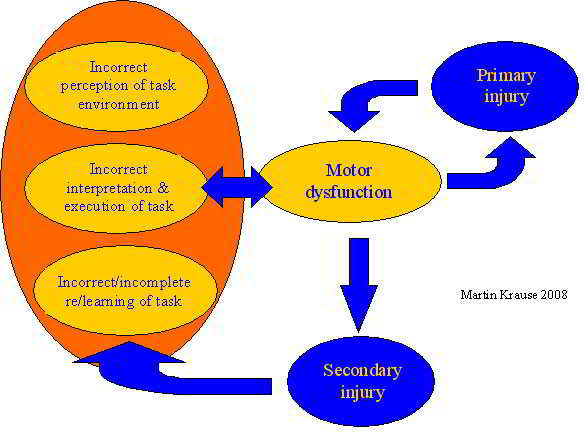
Nociceptive processing in the human brain of task relevant and task irrelevant noxious stimuli
Recently, investigators have demonstrated that various attentional operations can modulate nociceptive processing at different times, and pain perception probably depends upon a balance between those modulations (Legrain, Bruyer, Guerit, Plaghki 2003). Therefore, confirmation of an attentional priority to pain hypothesis would predict a lower threshold in triggering attentional orientation for nociception than for other sensory modalities. Hence, in the presence of pain motor performance would deteriorate due to reduced perception of other sensory stimuli.
Injury Prevention
In orienteering, common areas of pain occur due to injuries of the ankle, knee and back. Since short term memory are considered the 'work space' in which information from short term sensory store and long term memory are processed to produce movements, stimulus identification, response selection and response programming may all be affected by the presence of pain. Cognitive processes such as anticipation from visual feed-forward mechanisms have been shown to prevent knee injuries in athletes (Besier, Lloyd, Ackland and Cochrane 2001). Similar cognitive processes are plausible for the prevention of ongoing back pain and ankle injuries. However, disc herniation related back pain impairs feed-forward control of paraspinal muscles (Leinonen, Kankaanpaa, Luukkonen, Hanninen, Airaksinen, Taimela 2001). Once pain is present it may modify an individual's ability to focus attention (Villemurre & Bushnell 2002). Additionally, people with a fear of pain have an attentional bias toward pain related information (Keogh, Ellery, Hunt, Hannent 2001). Since the short term memory has only limited processing capacity this would lead to a reduction in performance (Luoto et al 1999). Interestingly, higher centers of the CNS are thought to be able to modulate, synaptically, these pain processes at the spinal cord level (Petrovic & Ingvar 2002; Ren & Dubner 2002). Furthermore, adequate training of cognitive mechanisms may optimize the CNS and musculoskeletal interaction for stabilizing the region of injury (McGill 2001). Motor imagery may be useful to provide quasi-kinaesthetic experiences (Annet 1995). Additionally, EMG biofeedback, pressure biofeedback, textured soles and video have been proposed to provide feedback for optimization of musculoskeletal retraining (Babyar 1995, McNevin, Wulf, Carlson 2000; Waddington & Adams 2003)
It has been suggested that bones, lgaments, muscles, etc will adapt their structure to specifically meet the demands of the sport (Ericsson & Lehrman 1996). Therefore, it may be expected that orienteers have particularly large bone structures around the ankles to adapt to the large loads produced from running on uneven ground.
Fixation refers to the movement pattern developed in the first stage of learning so that this pattern can be created at will (Gentile 1973). Such closed skills require a practice structure as similar as possible to orienteering. An example of this may be the use of a wobble board for training ankle proprioception and plyometrics for developing tendon-muscle reflexes. Later in learning the 'open skill' (Gentile 1972) of spatial ability can be trained in ever increasingly demanding terrain. Spatial ability includes the extroceptive awareness of the entire body movement in relation to the terrain. Balance entails the ability to maintain forward propulsion in uneven terrain using both extroceptive visual cues (occulomotor reflexes), vestibular reflexes as well as interoceptive senses such as kinesthesia from tendon, muscle and ligament proprioception. Additionally, functional tape is used by orienteers to gain feedback from skin sensation (Aeschlimann 1997).
Importantly, for the elite athlete, their team therapist needs to be in tune with the philosophical state of their athletes, the coaches, the manages, the families, the supporters, the press, the nation, the officials and themselves in order to attain exceptional performance.
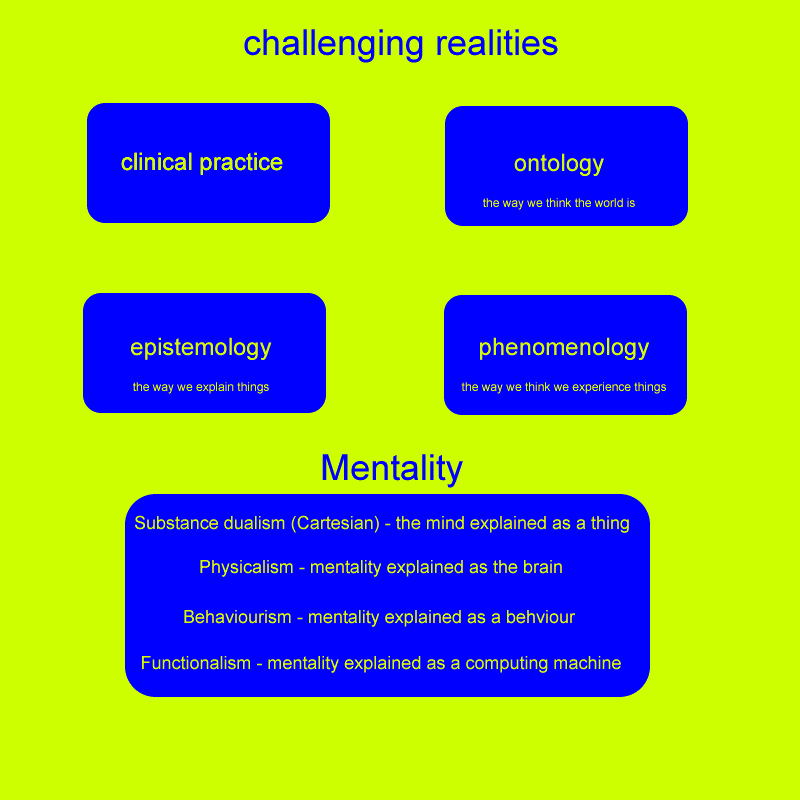

The psychophysical domain proposed by Aeschlimann (1997) involves 'determination' and 'risk taking'. Determination is defined as the conscious selection of direction, with the strength of resolve when making decisions where multiple possibilities are present (Singer 2002). The quality of determination can be made by training physical ability in various terrain and mental agility with various maps.
Risk taking when making route decisions has been found to be a particularly important aspect of skill acquisition when the orienteer is at the brink of being elite (Aerschlimann 1997). Although such an orienteer has a lot of experience and a large repertoire of automated motor processes, they may be reluctant to try something new, as errors may arise. Yet, the athlete can learn from these errors (Hanin, Korjus, Jouste, Baxter 2002). The performance goal is to free oneself from fear of making mistakes in execution or outcome and has been termed 'training for trust' (Moore & Stevenson 1994).
A strategy suggested was to practice risk taking at less important events. However, intrinsic to less important events are lesser amounts of psychological stress. Another strategy is to practice the limitation through the use of 'blind compass', map memory or contour map training tasks. Concentration (figure 5), high motivation, good self confidence and high frustration tolerance would aid in overcoming fear of risk taking (Aeschlimann 1997; Singer 2002). Using meta-cognition and a constructivist approach to learning, expectation of 'success probability' reinforces the new way (Hanin et al 2002). Thus the athlete can continue to lay down new decision making and motor patterns (Moore & Stevenson 1994).
Figure 5 : Concentration has been divided into 4 domains in the Swiss Orienteering Federation (SOLV) mental training manual
Mental Training (Annett 1995)
Uses of imagery include the ability to see success, that is to formulate performance goals and to motivate the attainment of those goals, to familiarize oneself with the environment, as a reminder of key elements of performance that require attention, to facilitate warm up and general preparedness and to perfect skills of mental practice. Mental practice is "the symbolic rehearsal of a physical activity in the absence of any gross muscular movements" used for the purpose of acquiring or maintaining a skill. Novices benefit more from practice on cognitive tasks, whereas experienced athletes benefit equally, consistent with the notion that novices may still be in the cognitive stage of learning. "Bereitschaftspotential" or global preparedness for action using the intentional processes through the action-language bridge of the motor and verbal systems allows the development of implicit procedural knowledge through the use of explicit declarative knowledge. Therefore, when experienced orienteers explain their route choice and decision making to another orienteer they are training their higher center cognitive processes.
Cognitive Behavioural Therapy in relation to injury

Conclusion : Orienteering rated in the context of motor learning theory
The body of evidence in motor learning supports orienteering development and training as proposed by SOLV. Experiential learning through practice is divided into orienteering task constraints, which include physical training, mental training and technical training. Mental training includes cognitive and psychophysical aspects of training. Technical training aims at maximizing the ability to anticipate various situations encountered throughout the race as well as perform error analysis and correction during and after the race (ESSM Magglingen J+S Leiterbuch 1993). Finally, for the high levels of physical and mental demands to occur during elite sporting endeavour, the athlete is required to either avoid injury, through measured analysis of risk taking relevant to their capacity, as well as learning the appropriate responses and processes for the rapid and complete recovery from injury.
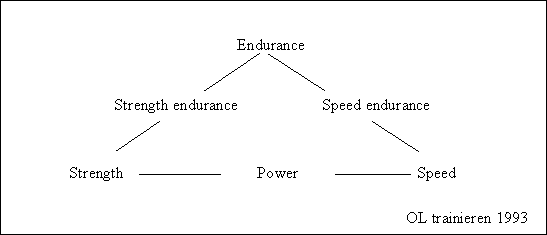
Footnote: Uli Aeschlimann has been the coach of the Swiss and Austrian Orienteering teams since 1989. He is credited for being one of the most successful orienteering coaches of recent times. The Swiss Orienteering federation underwent a considerable metamorphosis during the 1990's, gaining A class world status during this time. Switzerland is still the only country outside of Scandinavia to have such a status.
Examples of map reading exercises for enhanced cognition
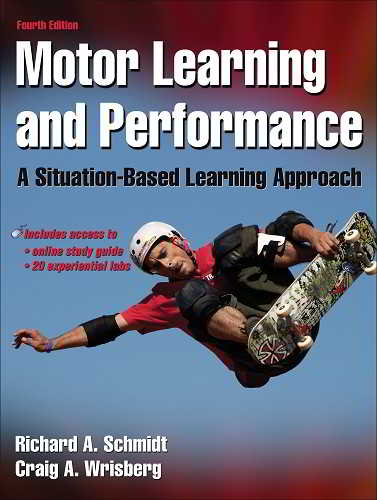
References
Aeschlimman U (1997) Diplomprojekt Orienteerungslauf: Auf der Treppe and die Spitze. Schweizerischer Orienteerungslauf Verband (SOLV), Schweizerischer Olympischer Verband (SOV), Eidgenoessische Sportschule Magglingen (ESSM) Chapters 2 and 3
Annettt J (1995) Motor imagery: perception or action? Neuropsychologia , 33 , 11, 1395 to 1417
Babyar SR (1995) Excessive scapular motion in individuals recovering from painful and stiff shoulders: causes and treatment strategies. Physical Therapy , 76 , 3, 228 to 237
Bernstein NA (1967) The coordination and regulation of movements . Oxford , Pergamon Press.
Besier TF, Lloyd DG, Ackland TR, Cochrane JL (2001) Anticipatory effects on knee joint loading during running and cutting maneuvers. Medicine & Science & Sports & Exercise , 33 , 7, 1176 to 1181.
Botterill C, Wilson C (2002) Overtraining: Emotional and interdisciplinary dimensions. In Kellman M (ed) Enhancing recovery: preventing underperformance in athletes , Champaign , Illinois , Human Kinetics, pp 143 to 159
Caillou N, Nourrit D, Deschamps T, Lauriot B, Delignieres D (2002). Overcoming spontaneous patterns of coordination during the acquisition of a complex balancing task. Canadian Journal of Experimental Psychology , 56 , 4, 283-293
Eccles DW, Walsh SE, Ingledew DK (2000) Visual attention in orienteers with different amounts of experience. Journal of Sports Sciences , 29 , 72 to 73
Eccles DW, Walsh SE, Ingledew DK (2002) A grounded theory of expert cognition in orienteering. A grounded theory of expert cognition in orienteering. Journal of Sports Sciences , 24 , 68 to 88
Eccles DW, Walsh SE, Ingledew DK (2002) The use of heuristics during route planning by expert and novice orienteers. Journal of Sports Sciences , 20 , 327-337
Eidgenoessische Sportschule Magglingen (ESSM) Magglingen (1993) OL trainieren: Broschuere zum Leiterhandbuch Form. 30.60.500d. Jugend und Sport Leiterhandbuch
Ericsson KA, Krampe RT, Tesch-Romer C (1993) The role of deliberate practice in the acquisition of expert performance. Psychological Review , 100 , 363 to 406
Ericsson KA, Lehmann AC (1996) Expert and Exceptional Performance: evidence of maximal adaptation to task constraints. Annu.Rev.Psychol , 47 , 273 to 305.
Gilhooly KJ (1990) Cognitive psychology and medical diagnosis. Applied Cognitive Psychology , 4 , 261 to 272
Gollwitzer PM (1999) Implementation Intentions : strong effects of simple plans. American Psychologist , 54 , 7, 493 to 503.
Hanin Y, Korjus T, Jouste P, Baxter P (2002) Rapid technique correction using old wat/new way: two case studies with Olympic athletes. The Sport Psychologist , 16 , 79 to 99
Keogh E, Ellery D, Hunt C, Hannent I (2001) Selective attentional bias for pain related stimuli amongst pain fearful individuals. Pain , 91 , 91 to 100
Latash L, Scholz JP, Schoener G (2002) Motor control strategies revealed in the structure of motor variability. Exercise and Sport Sciences Reviews , 30 , 1, 26 to 31
Leinonen V, Kankaanpaa M, Luukkonen M, Hanninen O, Airaksinen O, Taimela S (2001) Disc herniation-related back pain impairs feed-forward control of paraspinal muscles Spine , 26 , 16,367 to 372
Legrain V, Bruyer R, Guerit J-M, Plaghki L (2003) Nociceptive processing in the human brain of infrequent task relevant and task irrelevant noxious stimuli. A study with event-related potentials evoked by CO2 laser radiant heat stimuli. Pain , 103 , 237 to 248
Luoto S, Taimela S, Hurri H, Alaranta H (1999) Mechanisms explaining the association between low back trouble and deficits in information processing: a controlled study with follow-up. Spine , 24 , 3, 255 to 261
Magill RA Motor Learning : Concepts and Applications , Madison , Brown & Benchmark
Martens R (1987) Coaches guide to sport psychology , Champagn , Illinois , Human Kinetics
McGill SM (2001) Low back stability: from formal description to issues for performance and rehabilitation. Exercise & Sports Sciences Reviews , 29 , 1, 26 to 31
McNevin NH, Wulf G, Carlson C (2000) Effects of attentional focus, self control, and dyad training on motor learing: implications for physical rehabilitation. Physical Therapy , 80 , 4, 373 to 385
Moore WE, Stevenson JR (1994) Training for trust in sports skills. The Sports Psychologist , 8 , 1 to 12
Petrovic P, Ingvar M (2002) Imaging cognitive modulation of pain processing. Pain , 95 , 1 to 5
Ren K, Dubner R (2002) Descending modulation in persistent pain: an update. Pain , 100 , 1 to 6
Schmidt R, Lee R (1999) Motor Control and Learning , Human Kinetics
SOLV (1991): Mentale Trainingsformen im Orientierungslauf . Zurich
OL (1993) Trainieren ESSM Magglingen Jugend + Sport Leiterhandbuch
Singer RN (2002) Preperformance state, routines, and automaticity: what does it take to realize expertise in self paced events? Journal of Sport & Exercise Psychology , 24 , 359 to 375
Villemure C, Bushnell MC (2002) Cognitive modulation of pain: how do attention and emotion influence pain processing Pain , 95 , 195 to 199
Waddington G, Adams R (2003) Football boot insoles and sensitivity to extent of ankle inversion movement. British Journal Sports Medicine , 37 , 170 to 175
Williams AM (2000) Perceptual skill in soccer: implications for talent identification and development. Journal of Sports Sciences , 18 , 737 to 750
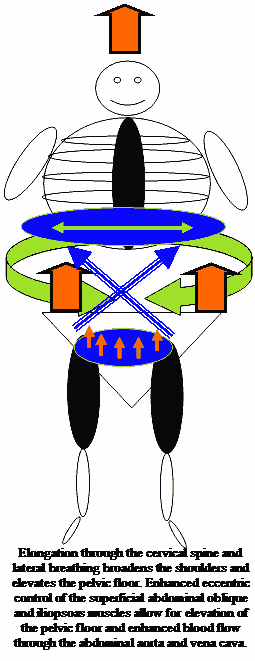
Orienteering Cognition (pdf file)
Last update : 16 July 2009







